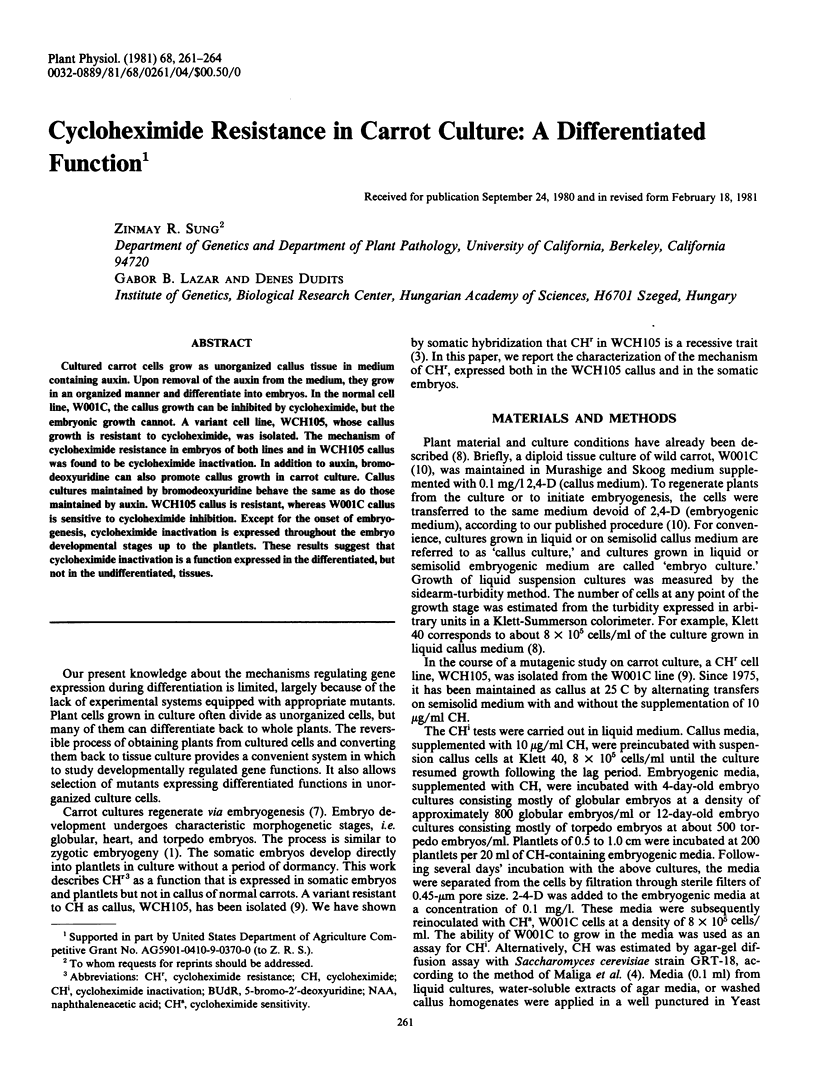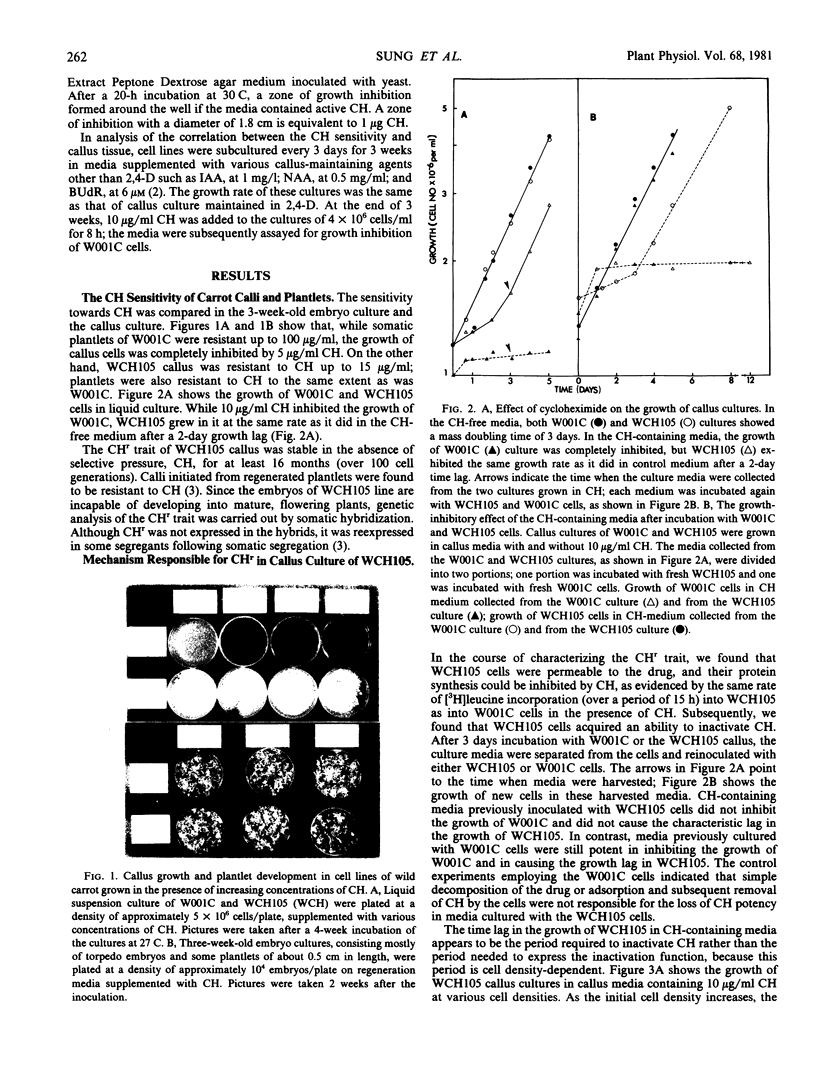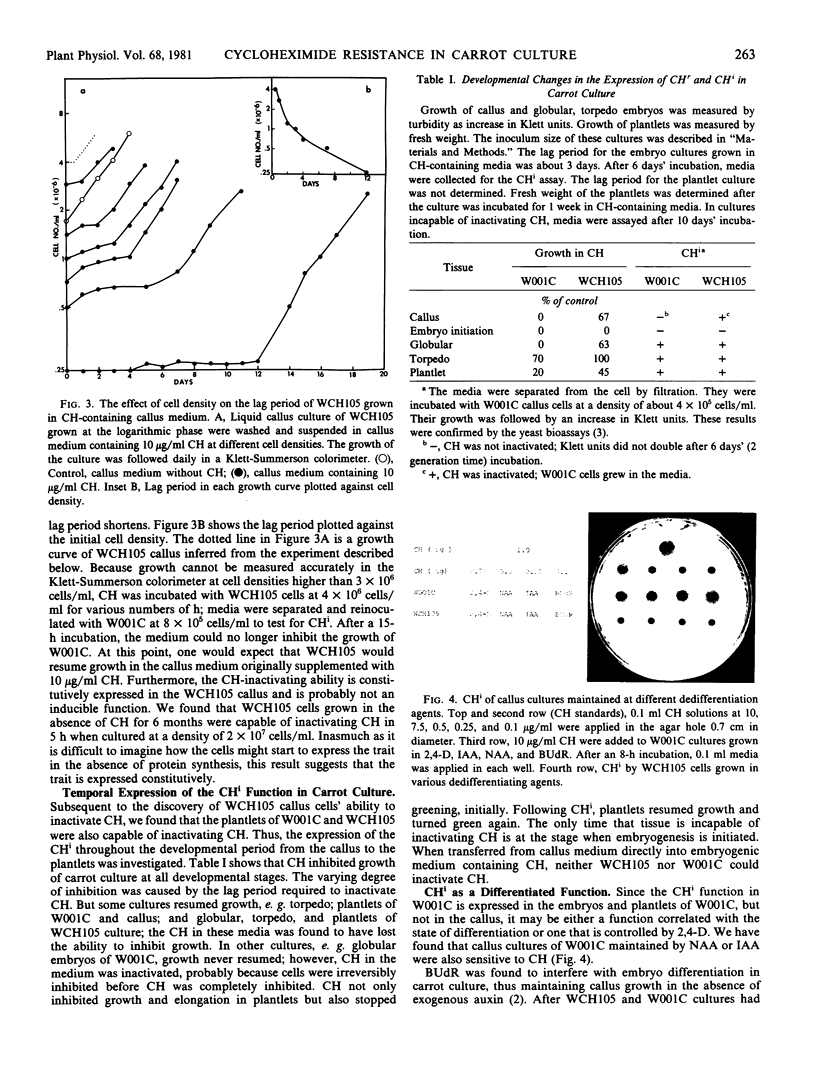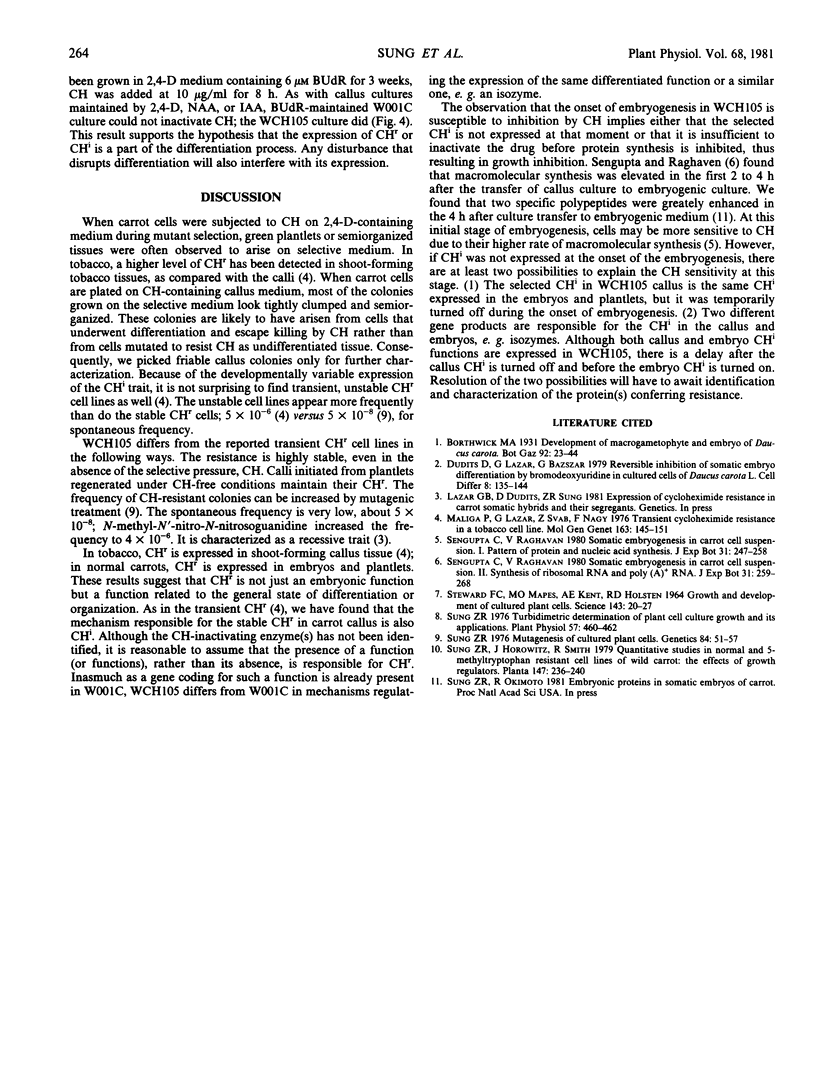Abstract
Cultured carrot cells grow as unorganized callus tissue in medium containing auxin. Upon removal of the auxin from the medium, they grow in an organized manner and differentiate into embryos. In the normal cell line, W001C, the callus growth can be inhibited by cycloheximide, but the embryonic growth cannot. A variant cell line, WCH105, whose callus growth is resistant to cycloheximide, was isolated. The mechanism of cycloheximide resistance in embryos of both lines and in WCH105 callus was found to be cycloheximide inactivation. In addition to auxin, bromodeoxyuridine can also promote callus growth in carrot culture. Callus cultures maintained by bromodeoxyuridine behave the same as do those maintained by auxin. WCH105 callus is resistant, whereas W001C callus is sensitive to cycloheximide inhibition. Except for the onset of embryogenesis, cycloheximide inactivation is expressed throughout the embryo developmental stages up to the plantlets. These results suggest that cycloheximide inactivation is a function expressed in the differentiated, but not in the undifferentiated, tissues.
Full text
PDF



Images in this article
Selected References
These references are in PubMed. This may not be the complete list of references from this article.
- STEWARD F. C., MAPES M. O., KENT A. E., HOLSTEN R. D. GROWTH AND DEVELOPMENT OF CULTURED PLANT CELLS. Science. 1964 Jan 3;143(3601):20–27. doi: 10.1126/science.143.3601.20. [DOI] [PubMed] [Google Scholar]
- Sung Z. R. Mutagenesis of cultured plant cells. Genetics. 1976 Sep;84(1):51–57. doi: 10.1093/genetics/84.1.51. [DOI] [PMC free article] [PubMed] [Google Scholar]
- Sung Z. R. Turbidimetric measurement of plant cell culture growth. Plant Physiol. 1976 Mar;57(3):460–462. doi: 10.1104/pp.57.3.460. [DOI] [PMC free article] [PubMed] [Google Scholar]




